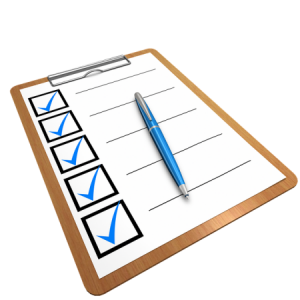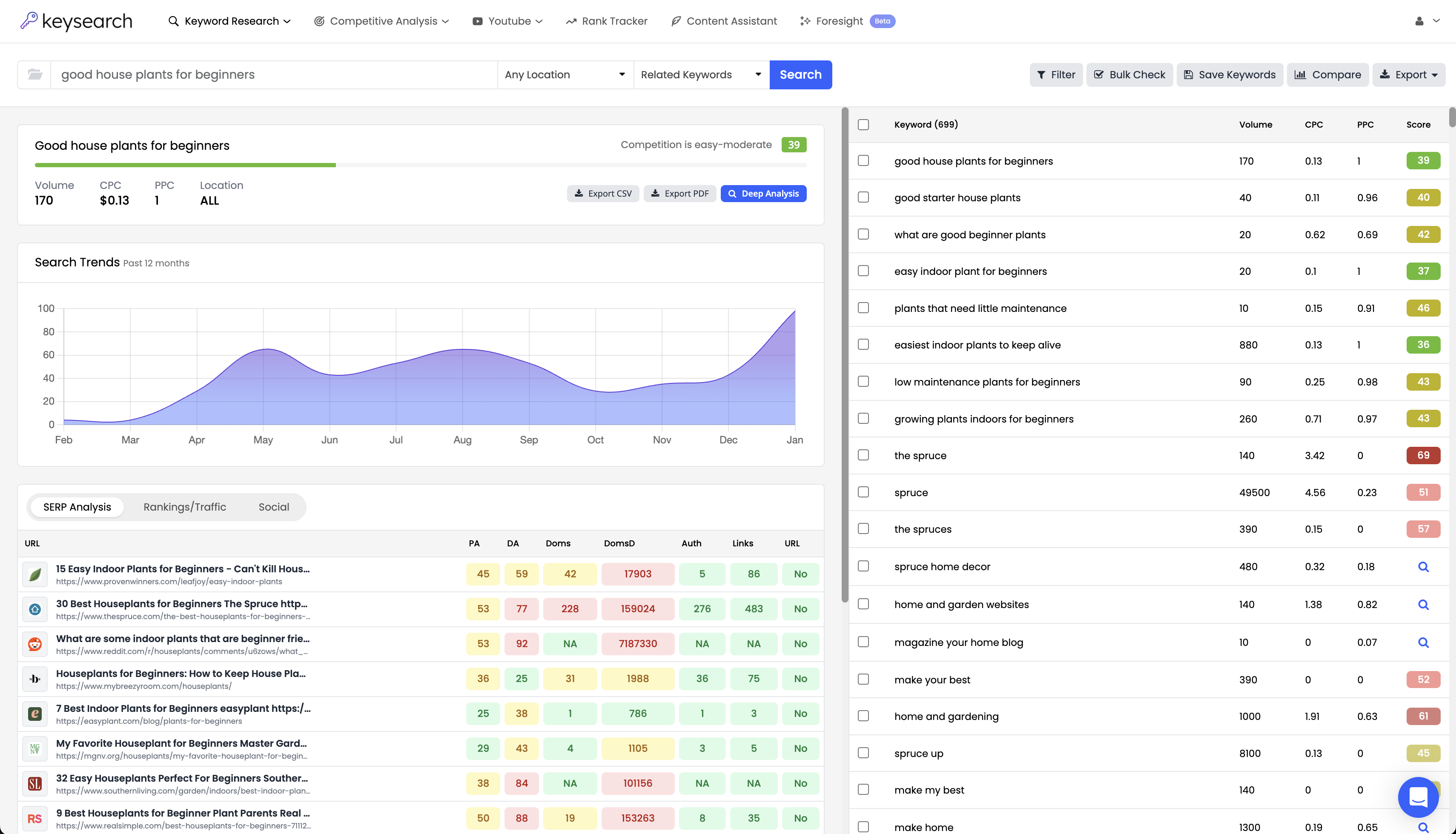The goal of this course is to make things easy for even the most basic of an SEO beginner. We’ll get you up to speed with what SEO really is, how it’s accomplished, and some tips and tricks to help increase your rankings and income using SEO. Although this guide is made for beginners, there will definitely be a boatload of useful info even for more experienced SEO’s as well. So strap in and let’s get going!
What is SEO?
SEO is an abbreviation for Search Engine Optimization. What this means is optimizing your site for search engines so that you can rank higher on Google, Bing, etc…
What does ranking higher mean?
When we refer to ranking in Google it’s referring to the position your page shows up in the search results when searching for specific keywords. A keyword is a word or phrase you type into Google for a search. So let’s use an example. Let’s search “golf clubs”. So in this example, “golf clubs” is the keyword.
 You’ll see the first results that show up in this example are ads. This can be seen by the little “Ads” marker next to those results. Most searches will have a few ads at the top of the results. These businesses have paid to have their sites show up at the top. That’s how Google makes its money. When we refer to your ranking position we are not counting the ads. So in this example:
You’ll see the first results that show up in this example are ads. This can be seen by the little “Ads” marker next to those results. Most searches will have a few ads at the top of the results. These businesses have paid to have their sites show up at the top. That’s how Google makes its money. When we refer to your ranking position we are not counting the ads. So in this example:
Rank #1 – https://www.golfgalaxy.com/f/golf-clubs-and-golf-club-sets
Rank #2 – https://www.dickssportinggoods.com/f/golf-clubs
Rank #3 – https://www.tgw.com/golf-clubs
And so on…
The goal of SEO is to rank as high as possible for relevant search terms. This way you are bringing in free targeted traffic. The higher you rank, the more people will click on your link, and the more traffic you will get. So if you were ranked in the top 3 for “golf clubs” you’d get a lot of traffic for people wanting to buy and know about golf clubs. What’s so great about SEO is unlike those guys that are paying for ads at the top, you get the traffic for free as long as your rankings are high.
How Do I Rank Higher?
Good question! Unfortunately, this is where things get tough and why SEO is such a big business.
How search engines work

First, we need to know how search engines work. Search engines have spiders.. these are little bots that crawl the web quickly and at a mass scale. Crawling means they scan your webpage, learn what it’s about, then scan the links on your page and follow them as well to be scanned.
After your page is scanned the search engine decides whether it is important enough to be indexed. Indexing is whether or not your page can be found in the search engine. You can check if a page is indexed in Google by typing “site:” before the URL in Google’s search box. Not all pages make Google’s index. So for example:
site:https://www.facebook.com
Now that the page is in the index Google uses hundreds of different factors in its algorithm to determine how a page is ranked and for what keywords it will show up. Not only that, the algorithm changes often and nobody but Google knows exactly how it works.
A bit of history
Back in the late 90’s early 2000’s, there was the golden age of SEO. Search engines were just getting started and it was easy to “game” them. They just weren’t very sophisticated. If you wanted to rank for the term “golf clubs” you could just stuff your page full of the phrase “golf clubs” and the more you did it, the better chance you had at ranking higher.
Throughout the years though search engines have gotten smarter, and the algorithms they use to determine which pages rank for what search terms are very complicated. Nobody knows the full formula but there are some basic things that we as SEO’s know work.
Backlinks
The granddaddy of all! Backlinks are the #1 most important aspect of ranking in Google. What are backlinks you ask? A backlink is simply when a page links to another page. For example, Wikipedia article on backlinks is a backlink to the Wikipedia page https://en.wikipedia.org/wiki/Backlink and the anchor text of that backlink is “Wikipedia article on backlinks”.
When Google was founded, the heart and soul of their algorithm used what’s called “PageRank”. Before Google and PageRank, search engines just crawled the web and used the content on the pages to determine what should rank where.
Larry Page and Sergey Brin who founded Google had a better idea. They realized that when people link to another web page they are basically casting a vote for that page. So if I have a blog and I link to https://www.golfgalaxy.com/f/golf-clubs-and-golf-club-sets I am basically vouching for this website. The more sites that link to a page, then the more votes it’s gotten and the higher it should rank! Well… not so fast.
PageRank is smart. It realized that certain websites have more authority than others. So a link from my blog should not be counted the same as a link coming from a hugely reputable, authoritative site like cnn.com or apple.com. PageRank accounts for all of this. 1 link from a highly authoritative site could count as much as thousands of links from smaller sites.
So without getting too technical, the idea behind PageRank and the backbone of Google’s entire algorithm is the more links and the more authoritative links you have the higher you should rank in Google.
Like I said before though, the Google algorithm is especially complicated. Although this is one of the most important factors, it’s not the only factor.
Content
The 2nd most important ranking factor is content. Google will claim till they’re blue in the face that “Content is king”. The reality is content is more like prince or princess. Backlinks are king but content needs to be up to snuff as well.
Google has added a lot of checks into their algorithms making sure thin, uninformative content does not rank well. So if your content is terrible there may not be enough powerful backlinks to help you out. If you have great content though then backlinks will be what you need to really put you over the edge. Always make sure your content is unique as well. Stealing someone else’s content is a big no-no in the search engine’s eyes and won’t get you anywhere.
Site Optimization
The final piece of the puzzle is optimizing your site. This means making sure your internal linking structure, URLs, HTML markup, etc.. is optimized the best it can be (you can use our Site Audit tool for this) so that Google can easily know what your site is about and what keywords you feel your site should be ranking for.
Site optimization can be very helpful especially as your site grows and becomes more authoritative, but out of the 3 big pillars of ranking: backlinks, content, and site optimization… site optimization is the one that will usually have the smallest impact. Not to say you shouldn’t make sure your site is optimized, but a highly optimized site without either links or good content will usually go nowhere in the search engines.
On-page and Off-page SEO
When you see people refer to on-page SEO they are referring to content and site optimization. Off-page is referring to external backlinks. Simple as that!
Other Reading
If you want an even deeper look at some of the basics of SEO you can try Linkio’s in-depth SEO Tutorial before moving on to the next part of our course.
What We Learned
So in Part 1 here you should have gotten a good overview of the basics of SEO. Let’s recap some things to remember.
- SEO (search engine optimization) involves optimizing on-page and off-page techniques to rank higher in search engines
- Ranking is the position your site shows up for when searching a specific keyword in Google
- Keywords are words or phrases typed into the search engine box
- The goal of SEO is to rank higher for certain keywords and get free, relevant traffic
- Search engines crawl the web through links and index pages
- Backlinks are hugely important to SEO. More backlinks and more authoritative backlinks usually lead to better rankings
- Content needs to be quality in order to rank on Google
- Optimizing your site can help give you that extra SEO edge
- On-page SEO refers to content and site optimization. Off-page refers to backlinks.
In the upcoming parts of this SEO tutorial, we will dig further into the big 3 pillars.. backlinks, content, and site optimization. We’ll also show you the value of keyword research, competitor analysis, and other great tips to get your site moving up the rankings and grabbing that coveted free traffic!
Now before moving on to other parts of the course, now is a great time to take literally 20 seconds to sign up and get your account here at Keysearch. This isn’t a necessary step to continue but you’ll have access to certain tools discussed in later tutorials that will be a big help with your SEO efforts.
You can continue on to Part 2 of the tutorial – What The Search Engines Want.
- How to Do Keyword Research for Free: Best Free Keyword Research Tools in 2024 - December 13, 2024
- Benefits of Keyword Clustering: Why is it Important to Group Relevant Keywords Together? - December 13, 2024
- What is Keyword Density in SEO and Its Importance - December 13, 2024








